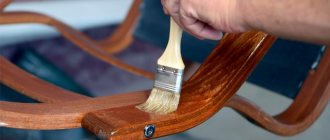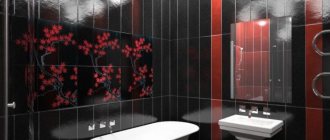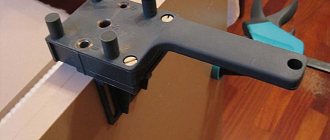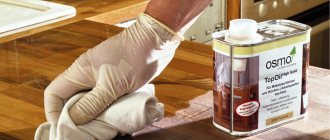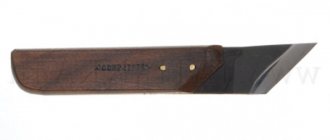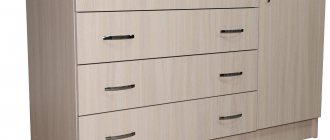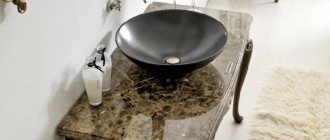Wooden furniture can add coziness to any room; it is simultaneously beautiful, functional and durable, for which it is valued among buyers.
But during use, abrasions and scratches may appear on it, which spoil the appearance, while the other properties of the furniture are not lost and there is no point in replacing it. In order to get rid of the resulting defects, furniture wax is used. It is also worth noting that the scope of its application is somewhat wider than just furniture.
Types and uses of furniture wax for scratches
Wooden furniture is in particular demand among consumers.
Its demand is explained by the harmlessness, durability and beauty of the material, but over time, scratches, cracks, and chips may appear on the surface, which upset the owners. There are many effective means to eliminate such defects, one of which is furniture wax. When used correctly, it protects wood from moisture and perfectly hides furniture defects.
- Application
- Types Soft
- Solid
- Liquid
Types of furniture wax
Mixtures are divided into the following types:
Soft wax makes wood surfaces smooth and provides the desired shade to the wood texture.
This wax is preheated to make the wood material softer and the application better.
All corners, threads, chamfers are impregnated with this wax with maximum efficiency.
Soft is used if you want to update the appearance of furniture and give it a more attractive appearance, remove minor scratches and small cracks, repair shallow dents and chips.
This type of product is quite easy to use.
Before applying it, it is necessary to prepare the area for treatment - wipe it dry, remove any remaining paint or varnish, if any. Then the product is applied by rubbing in the required amount and left for 25 minutes.
The main advantage of this coating is that the wax penetrates the wood rather than remaining on the surface.
The excess is removed with a knife, and the treated area is polished with a felt rag or cotton napkin. If the scratches are significant, the holding time can be increased.
This type has a richer palette of colors than the solid type.
Hard wax performs the same restoration functions as soft wax, but this material gives a greater effect in eliminating deep damage due to its thicker and denser consistency. The best aesthetic effect from the use of solid material is achieved due to its advantages such as high strength and resistance to mechanical stress.
This coating is indestructible even after many years.
It is more troublesome to use, but it perfectly restores serious flaws. Before applying, it must be melted and cooled for a few seconds for better adhesion. If necessary, remove excess with a knife and wipe with a napkin.
The cost of this type of mixture is always higher than the soft one, and it is not always easy to find on the open market.
The composition of liquid wax uses synthetic additives, thanks to which the required liquid consistency is achieved. The advantage of this type is the ease of application with a brush, penetration into any cracks and scratches.
Liquid wax is applied and dries in minimal time. Just a couple of hours – and the furniture is almost ready for use!
Restoration wax can be found in the form of paste-like, creamy or oil-like mixtures, differing in composition, consistency, method of application and nature of damage (scratch depth, etc.).
How to choose
The choice of one or another restoration product for furniture is influenced by color, type and composition. On sale you can find furniture wax in a wide variety of shades.
Most types are based on the following natural ingredients:
- beeswax or carnauba wax;
- essential oils of coniferous trees;
- tree resin;
- oils (linseed, olive and others);
- drying oil
If the choice is based on the consistency of the product, then everything will depend on the extent of the damage, including the depth of the cracks and holes.
It is recommended to use liquid wax for numerous shallow scratches. But a hard type of wax must be purchased to eliminate large chips and cracks where careful restoration is required. Soft wax is popular due to its rich color palette (white, yellow, brown, blue, green, dark oak color) and ease of use.
Wax is available for sale in different forms. To remove minor damage, just choose a wax pencil. And for restoration of a large area, it is more profitable to buy bulk containers.
Rules of application
Short rules will help an amateur use furniture wax correctly and complete restoration work without errors:
- Surface preparation. For uniform impregnation, the pores of the wood must be open. If the furniture is factory-made and not covered with paint and varnish, then no preparation is required. If the surface is varnished, then to remove the top layer you will need the help of a solvent. They should treat the surface several times until the remaining varnish is removed. It is necessary to go through the direction of the fibers with sanding material.
- Applying wax. First you need to decide on the variety. The preparation of the necessary tools for the job depends on this. The soft look is rubbed in the direction of the wood grain using a thick cloth. If the choice fell on the hard type, then a spatula will be required to evenly rub into the surface. After applying the composition, the structure should be left alone for an hour. Then the excess wax mass is removed. To achieve a glossy effect, treat the wooden layer again.
Benefits of wax
Using wax for restoration work is beneficial due to the properties of the substance, which penetrates deeply into the structure of the wood, strengthens it and subsequently protects it from mechanical damage and moisture. Applying a layer of wax ointment to the furniture will give the product a renewed look and the natural richness of the color of living wood. With a varied palette of colors, you can match the crayons to any tree or change the shade to another if necessary. Wax crayons are an inexpensive but effective tool that helps in solving a wide range of repair tasks and gives a new chance to furniture that has lost its former attractiveness.
Choice of product
When purchasing wax, you need to follow a number of rules. First of all, the specific problem is taken into account: if a small scratch appears on the furniture, it is easier to remove it with a wax pencil; if there is a large chip, you should buy a paste-like (soft) material. Also, when selecting, carefully consider the shade of the product - it must match well the color of the product itself, otherwise it will stand out on it in the form of a spot.
Waxes for outdoor use must have powerful water-repellent properties and contain components that prevent them from fading from ultraviolet radiation. To restore a large surface or to completely renew furniture, it is worth buying wax in large containers, which is much more profitable.
Instructions for use
To work with a soft composition, you will need a rubber spatula, felt, and to open the package - a sharp knife. First, prepare the surface so that it is clean and the pores of the wood are open.
The defective area is cleaned of varnish (if it was previously applied) using a solvent, washed to remove dirt, and completely dried. To improve the absorbency of the composition, go over the base with sandpaper (in the direction of the fibers of the material).
Then proceed like this:
- open the wax package;
- scoop up the product with a small spatula;
- apply the composition to the damaged area, sealing the crack or scratch;
- rub the material with felt;
- the excess is carefully cleaned off with the same spatula or knife;
- leave the product to dry for an hour;
- polish the surface again to give it a glossy finish.
As a rule, a scratch is treated with hard wax in the form of a pencil without prior preparation. Some products involve preliminary melting and subsequent infusion into a crack or other defect. In this case, you will need a soldering iron or a hair dryer to work. If you don’t have such tools, you can use a gas torch or lighter. The heated material is applied to the problem area, leveled with a spatula, and after drying, polished with a soft cloth. Excess composition is removed with a blunt knife.
How to use
Furniture wax should be used taking into account the recommendations specified by the manufacturer in the instructions. The method of application for each type of protective agent is different.
To work with a soft type of wax, you will need a small spatula, a construction knife with a sharp blade, and felt material. Wooden objects are restored by filling the resulting voids with wax. First, the substance is scooped up with a spatula and applied to the site of damage (scratches, cracks).
Excess is carefully removed with a knife, otherwise there is a high probability of creating new scratches. To smooth the material, you need to use a plastic corner to make circular movements.
The treated surface is polished with a felt cloth until the structure is completely homogeneous.
If hard wax is used, it is melted using a soldering iron, gas torch or lighter. Heated material at room temperature is applied to chips, cracks and leveled. If necessary, the surface is sanded with a soft cloth.
Varieties
Today, you can find two types of furniture chalk on sale in hardware stores: solid and liquid. Each of them has a number of advantages and disadvantages, as well as different methods of use. To figure out which option to choose for your home, we suggest studying the summary table for the two types of crayons.
| Wax type | Purpose | Nuances of use | pros | Minuses |
| Soft | Repairing chips, cracks, scratches and other defects on horizontal wooden surfaces. Suitable for sealing marks from self-tapping screws and broken corners of the table top. | Apply with a spatula, after which the excess is removed with a felt disc. Ideal for filling large and deep surface voids. | Easy to use, available and sold in any store. | Not suitable for processing furniture that will subsequently be exposed to chemicals and ultraviolet radiation. |
| Solid | Repairing scratches and chips on doors, windows, and wooden interior items. | It is necessary to use solid furniture wax only in molten form. | High degree of protection against mechanical damage and temperature. | Difficult to find on sale, high cost, poor color palette. |
It is worth highlighting liquid wax separately, which is applied to the surface of the products using a small spatula. Its disadvantage is that it cannot be used on vertical planes. In consistency, it resembles drying oil - this mixture is achieved by the presence of synthetic substances and solvents. Its advantage is that the material penetrates holes of any diameter and depth, filling the gaps.
To use the solid type, a wax melter is used, which allows you to soften the structure of the substance, preparing it for work. This can also be achieved without special devices, for example, using a household hair dryer.
Today you can find the product on sale in several forms: wax crayons, as well as jars with a liquid composition. If wax will be used at home occasionally, it is better to take a wax pencil.
Pros and cons of using
Unlike other products, the mixture does not lie on the surface of the wood, but penetrates its internal structure. The texture of the wood does not deteriorate, and the heat is retained for a long time. In addition, wax has the following advantages:
- The surface acquires a natural velvety feel to the touch; there is no glossy polishing.
- Furniture made from natural wood will sparkle with new and expressive colors.
- The range is presented in various tinting options: any furniture will harmoniously fit into the interior.
- In terms of its external composition, wax is a thick, dense mass that completely fills chips, cracks, scratches and other mechanical flaws.
There are many more pros than cons. The main disadvantages include the low protective level compared to the same varnish. It is also impossible to completely disguise marks and stains that form as a result of the harmful effects of moisture and sunlight.
Basic properties and purpose
Modern cabinets and chests of drawers are subject to mechanical damage as a result of numerous moves and rearrangements, tables lose their attractiveness due to careless handling, so furniture wax remains in demand for minor repairs and care of products made of natural wood, laminate, parquet, chipboard and fiberboard. It is also suitable for repairing chips and cracks in window frames and doors. Furniture wax is used to treat panels, picture frames, wooden boxes and stair railings.
In addition to beeswax, the composition may contain synthetic resins, which give it greater durability, coloring pigment, and natural oils (for example, olive or linseed). Oil with wax provides light protection from moisture and a pleasant matte shine to wooden elements. The main purpose of the product is the renewal and restoration of products. A properly selected composition performs several functions at once:
- masks chips, scratches, small cracks;
- renews the surface of products, adding shine to them and emphasizing the texture of the wood;
- protects furniture from external influences, penetrating deeply into the structure of the material;
- used to enhance or slightly change the shade of wood;
- has antistatic properties, prevents dust from settling.
Products based on natural wax are very gentle on the texture of wood. They cannot radically change the color; they simply renew even heavily worn surfaces and give them a presentable appearance.
Manufacturers offer furniture wax for interior and exterior use; this should be taken into account when choosing a composition.
Varieties for interior use are less resistant to sunlight and moisture. The products differ in the form of release; it can be a hard bar, a pencil, or soft compositions with a texture reminiscent of Vaseline. Furniture wax can be colorless or tinted. In the second case, its shade should be as close as possible to the color of the surface being treated.
What is
Oil-wax for wooden furniture is a material used for polishing interior items.
As a result of its use, a protective coating with good performance characteristics appears on the surface.
The main components of the material, as the name implies, are oil and wax. The first agent penetrates even into the lower layers of wood, protecting it from external negative influences, preventing the destruction of the solid structure. Wax forms a hard coating on the surface. It also protects the wood from external negative influences, and also increases the attractiveness of the furniture.
Features of varieties
Furniture wax of soft and hard grades has its own characteristics.
Soft
Use it to get rid of scratches, chips, cracks and dents. Even if there are large broken edges or holes from self-tapping screws, this remedy will be effective.
In order to apply it yourself, you must follow these recommendations:
- To restore objects, the product must be rubbed in thoroughly.
- Use an edge knife to apply wax to the edges. The missing piece of furniture should also be formed from it. You need to level the surface using a spatula.
- Excess pieces of material are cut off with a knife. Smooth the plastic surface with a corner.
- You can use a felt cloth to polish the repaired surface.
Using such a pencil, you can restore patterns on furniture.
Solid
Such wax pencils have the same purpose as soft ones.
They differ in that:
- have a high degree of protection against mechanical damage,
- can be used for DIY restoration, but only after melting,
- their price is higher than soft ones,
- they are not easy to find,
- There are few color varieties.
The features of removing scratches with your own hands using this product are the same as in the case of soft ones. But a hard pencil must first be melted using a lighter, blowtorch or torch.
Restoration of laminated surfaces
If you need to put the laminated surface in order, then you should familiarize yourself with the following recipe. To prepare it, prepare the following ingredients:
- 100 grams of wax; 25 grams of rosin; 50 grams of turpentine; propolis.
- Melt the substance in a water bath. After dissolution, add rosin. Carefully pour in the turpentine. To make the solution acquire a pleasant smell, you can add a little propolis to it. Pour into a container and cool. Apply with a soft cloth.
Thanks to this processing you will receive:
- water-repellent surface; disguised scratches and minor defects; filled joints; beautiful matte shine; pleasant aroma.
Self-production
The recipe is simple. Many experts prepare wax for furniture with their own hands. The solution is prepared in a water bath. To do this, you need to combine beeswax with turpentine. The first component must be thoroughly chopped with a knife, then placed in a container with turpentine. It should be half as much as beeswax. During the cooking process, the mixture should completely melt. To add thickness, the remaining wax is added to the finished solution. The main safety rule is careful handling of turpentine. It can easily ignite, so you should not keep it on fire for a long time.
As soon as the finished mixture has cooled, evaluate the degree of thickness. To make the solution more liquid, you need to place the container on the fire again and add turpentine. The resulting wax is stored in closed packaging.
During moving or long-term use of furniture, chips, cracks or scratches may appear. Replacing cabinet elements will entail serious financial expenses, and throwing furniture into a landfill can be a pity or impractical. Wax comes to the rescue, which easily gives the furniture its original appearance.
In order to learn how to use furniture wax, you do not need to have much experience, it is enough to learn the basic points of the work. This will allow you not to use paid services of specialists.
